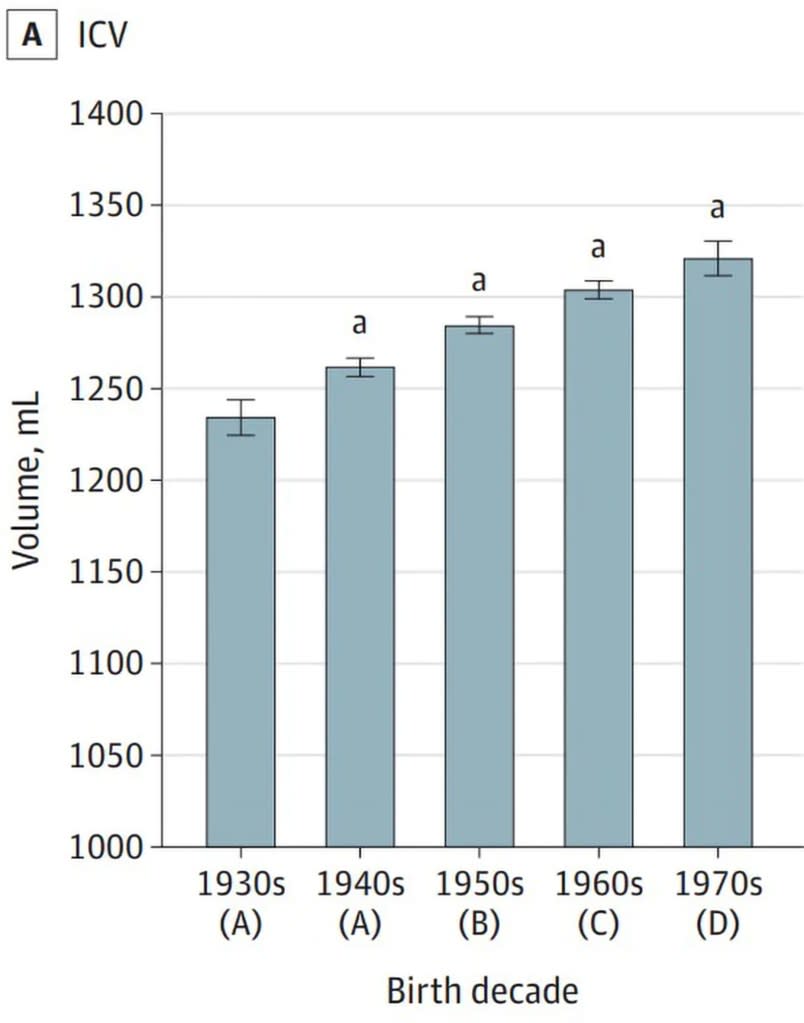Brains are getting bigger — and researchers reveal why it’s a big deal

Check out the big brain on Brad!
Researchers believe there could be some truth to the (pulp) fiction line, as a recent study has shown that our brains may in fact be getting bigger over time.
The results could help reduce the risk of age-related dementia.
Scientists at UC Davis Health revealed that brains from people born in the 1970s had a 6.6% higher volume and 15% greater surface area than the brains from people born in the 1930s. The study was published in JAMA Neurology in March.

“Genetics plays a major role in determining brain size, but our findings indicate external influences — such as health, social, cultural and educational factors — may also play a role,” Charles DeCarli, author of the study and distinguished professor of neurology at UC Davis, told ScienceDaily.
The researchers combed through evidence from the Framingham Heart Study, which is a community-based study based in Framingham, Massachusetts, that has gone on for some 75 years, and now includes second and third generation participants.
Between March 1999 and November 2019, scientists looked at MRIs from individuals born between 1925 and 1968, with the average age of participants being 57. They examined brain scans of 3,226 participants (53% female, 47% male) and noticed a remarkable pattern.

Brain volume (or intracranial volume) slowly, but steadily increased incrementally. During the 1930s, the average brain volume was 1,234 millimeters — but by the 1970s, the average was 1,321 millimeters; an increase of 6.6%. Cortical surface area — the brain’s surface — also increased in size: growing from 2,056 square centimeters for those born in the 1930s to 2,104 square centimeters for those born in the 1970s.

Researchers also observed an increase in size when it came to gray matter, white matter and the hippocampus — a part of the brain associated with learning and memory.
White matter is found in the deep tissues of the brain, and contains nerve fibers that allow for communication between the different parts of the brain. It takes its name from the coating (a myelin sheath) around the nerves, which is white.
Gray matter, on the other hand, is the outer layer of the brain, and allows individuals control over movement, memory and emotions. It takes its name from a high concentration of neuronal cell bodies, which give a gray color to the tissue.
The results are encouraging, because it could mean the decline of age-related dementias, like Alzheimer’s, scientists noted.

“Larger brain structures like those observed in our study may reflect improved brain development and improved brain health,” DeCarli explained. “A larger brain structure represents a larger brain reserve and may buffer the late-life effects of age-related brain diseases like Alzheimer’s and related dementias.”

